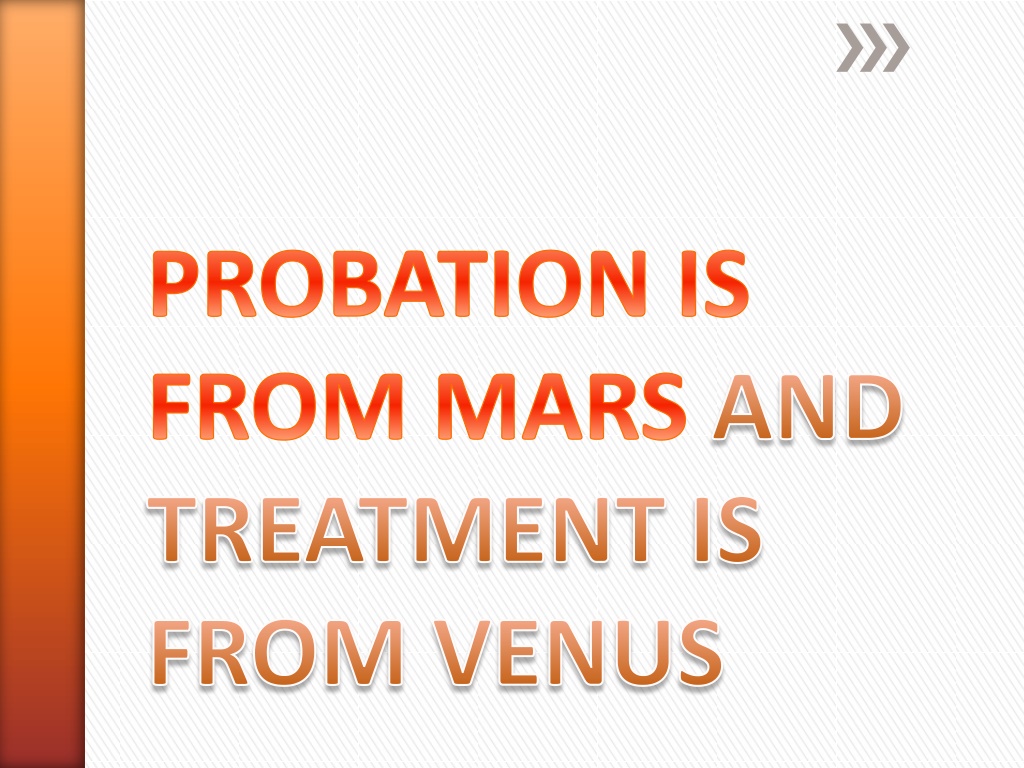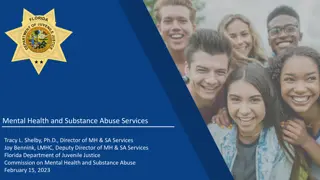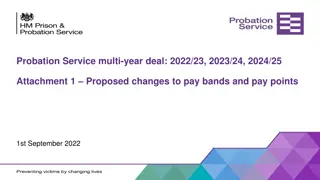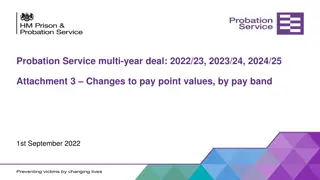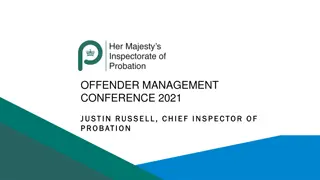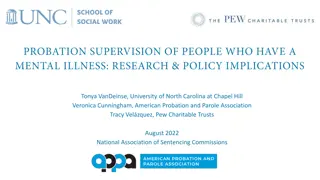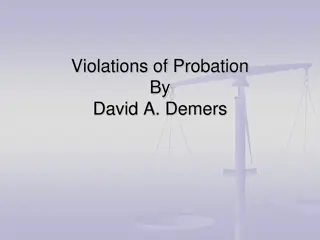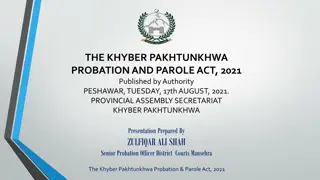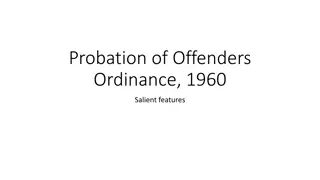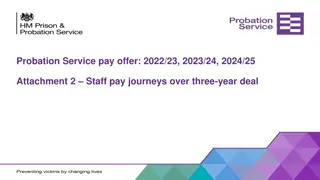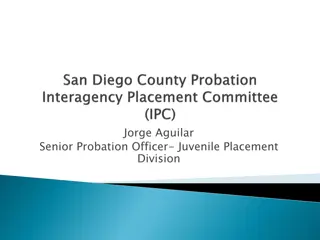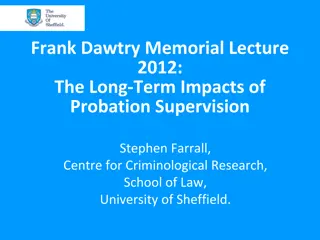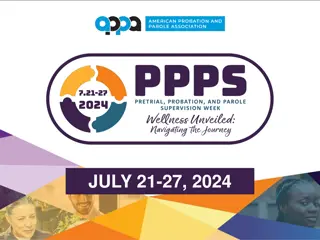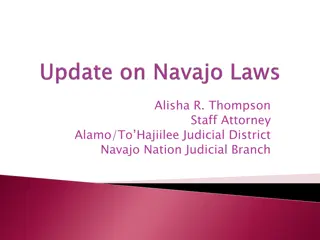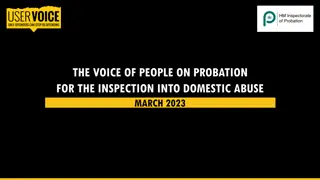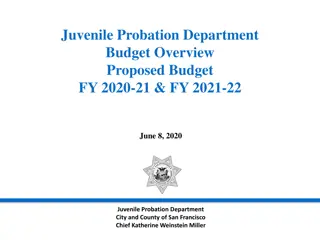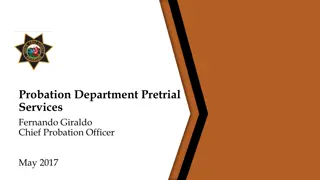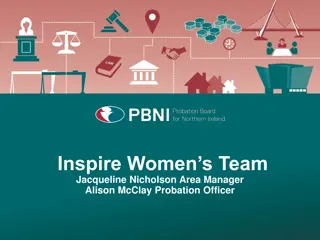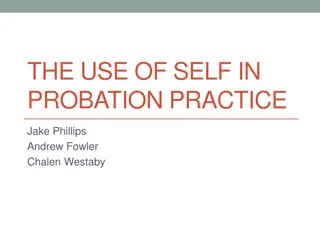Understanding Probation and Treatment Dynamics
Exploring the distinctive approaches of probation and treatment in the criminal justice system, emphasizing common goals and collaborative efforts. Examining the intersection of accountability, rehabilitation, and the path to productive citizenship. Delving into tools for risk assessment, addiction levels, and domains influencing individual outcomes.
Download Presentation

Please find below an Image/Link to download the presentation.
The content on the website is provided AS IS for your information and personal use only. It may not be sold, licensed, or shared on other websites without obtaining consent from the author. Download presentation by click this link. If you encounter any issues during the download, it is possible that the publisher has removed the file from their server.
E N D
Presentation Transcript
PROBATION IS FROM MARS AND TREATMENT IS FROM VENUS
Same end/different means Commonalities Collaboration 101 Objectives
TREATMENT Rehabilitation Mental health/trauma Changing behaviors/lives PROBATION Accountability Community Safety Compliance Productive citizens
ACCOUNTABILITY REHABILITATION ADVERSARY JUDGMENTAL ADVOCACY THERAPEUTIC
Same end/different means Commonalities Collaboration 101 Objectives
Criminogenic Risk Need tool Predictor of recidivism Sometimes implies criminality It is about the risk to offend and not the offense you already committed. Minimum- low moderate -high moderate-high Level of Service Inventory (LSI-R)
Domains Criminal History Education/Employment Finances Family Association/Peers Accommodations/residence Leisure/recreation Drug/Alcohol Mental Health Attitudes and Orientations Level of Service Inventory (LSI)
11 factors to consider for identifying the level of addiction. Mild: The presence of 2 to 3 symptoms Moderate: The presence of 4 to 5 symptoms Severe: The presence of 6 or more symptoms DSM V Criteria
1. Intoxication and withdrawal potential 2. Biomedical conditions and complications 3. Emotional behavioral cognitive conditions and complications 4. Readiness to change 5. Relapse/continued use potential 6. Recovery Environment ASAM Criteria
GAIN I Level of Care Dimensions Treatment Plan LSI-R Level of Supervision Domains Case plans Similarities
Same end/different means Commonalities Collaboration 101 Objectives
Stages of Team Development (Bruce Tuckman)
Forming Storming Norming Performing Relationship Performance
Forming Storming Norming Performing Relationship Performance
Forming Storming Norming Performing Relationship Performance
Networking is best described as exchanging information (i.e., agencies may meet to inform one another of their procedures, processes, restrictions, resources, and guidelines); Coordinating involves making slight alterations to activities to accommodate the needs of another (i.e., one agency might change their hours so that they have staff available to receive referrals from another agency); and Cooperating entails the sharing of resources (i.e., one agency may provide office space while another provides staff so that services can be co located). Collaboration 101
Members share stake in both process and outcome Multiple layers of participation Flexibility Development of clear roles and policy guidelines Adaptability Appropriated pace of development Factors related to process and structure
Open and frequent communication Established and informal relationships Communication links All of this improves trust and respect Factors related to communication
Attitude- By asserting our rightness we block others from being able to see their responsibility. Other person syndrome-things would work just fine if the other person would . Remember the mission- what is in the best interest of the mutual client Cooperation
Q & A pmeigio@co.bonneville.id.us rporter@idcourts.net
